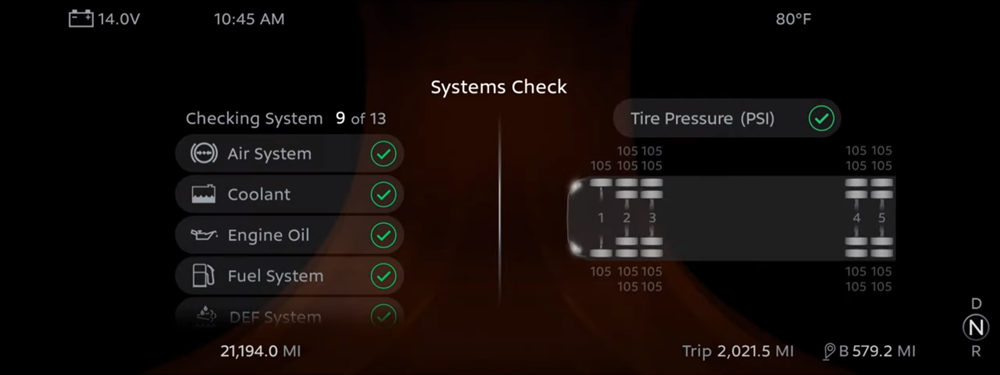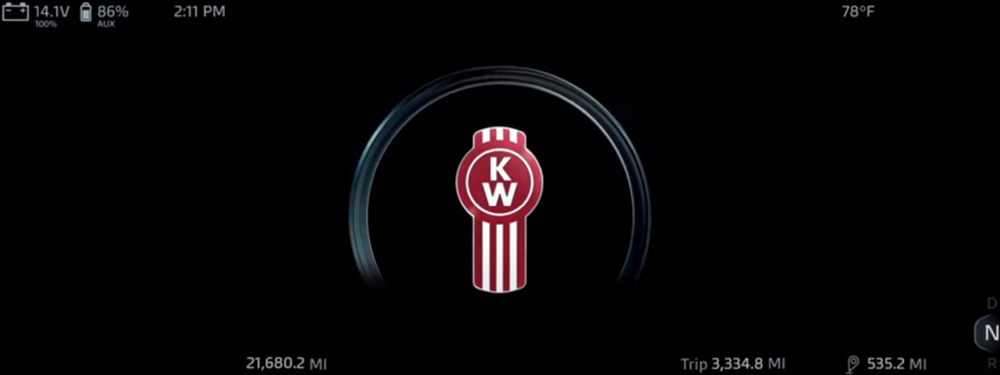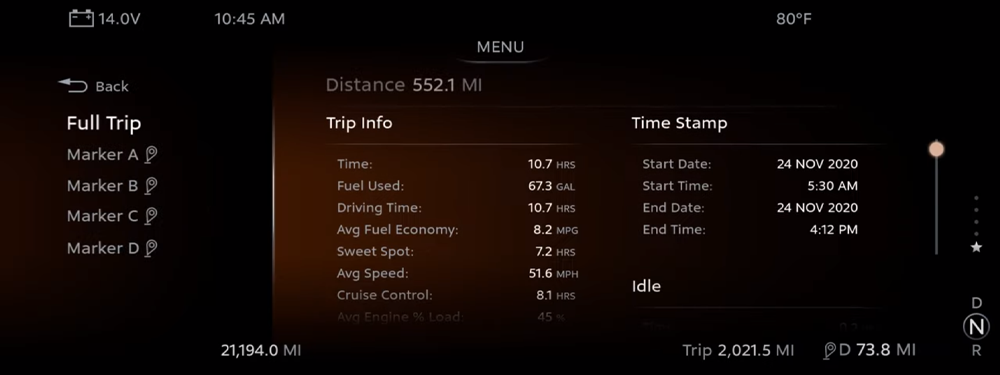Kenworth & Peterbilt Digital Display
Digital Dashboard for North American Commercial Vehicles
This project marked the first time PACCAR released a digital display as a replacement to their previously traditional dashboard display. The project came with a relatively high learning curve, as both the company and I learned about the integration of digital graphics into an embedded systems environment.
Only portions these projects are currently open to the public.
Overview
Problem: Introduce thousands of Kenworth and Peterbilt customers to PACCAR’s first digital graphics based display and driving experience.
Platform: Kenworth and Peterbilt Brand Commercial Trucks
Process: Identify and Create Reusable Components, Build Features
Tools: Kanzi Graphics Engine, C++, Illustrator, Photoshop
My Role:
- Identify and resolve performance inefficiencies in the software
- Develop custom features for the Kanzi graphics engine to allow for previously impossible front-end and back end interfacing
- Strategized and integrated an overhaul to the startup procudure, ensuring faster boot up time and better overall user experience
Project Goals
1. Build Dynamic Lists
2. Optimize Startup Process
3. Refactor Menus to Adapt to Each Vehicle Configuration
4. Develop, Optimize and Maintain Features
Build Dynamic Lists
Goals: Develop a system to build and refresh dynamic lists.

In the context of driving a truck, where all types of issues could occur based on mechanical failure or driver behavior, it is important to give the user a fully dynamic list of all the current warnings.
The graphics engine used in this project does not have a native, clean-cut way of building fully dynamic lists, so I developed a plugin function to support this in multiple contexts for the Kenworth, Peterbilt and eventually also the DAF displays.
Optimize Startup Process
Goals: Ensure a timely and efficient startup process for drivers keying the vehicle on, regardless of situational context.

The graphics engine typically exports binary files that have no native way of communicating to the rest of the code-base. After identifying that we could optimize our startup process if we could create a communication channel between these binaries, I developed a plugin to the engine allowing these binaries to send messages to the back-end code-base as certain assets finished loading.
At this point we opened up much more control over the loading process. This model eventually was applied to Kenworth, Peterbilt and DAF trucks.
Refactor Menus to Adapt to Each Vehicle Configuration
Goals: Refactor the menus in order to support special customer-defined configurations.

Kenworth and Peterbilt both pride themselves on allowing the customers a great deal of control over the trucks they buy. Since customers can request any number of unique configurations to their vehicle, the menus and other display content need to adapt to only show (and load) features that have been installed on their vehicles.
Originally, the display defaulted to loading everything and simply hiding uninstalled content. I needed to refactor the menus for Kenworth and Peterbilt to support a system that only loaded content that the customer had requested.
Develop, Optimize and Maintain Features
Goals: Develop new feature content and maintain defect-free product.

Throughout the project, existing features were regularly being refined and new features were periodically being added. I helped support the development of these features as well as defect resolution.